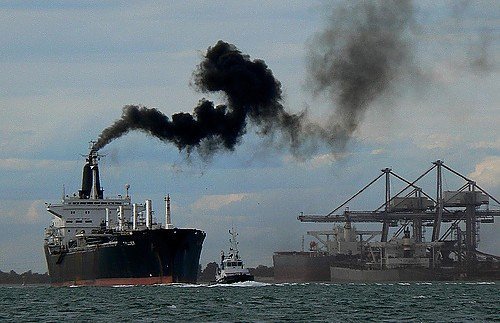Banks using energy-efficiency data to help decide on shipping loans: Carbon War Room

London: Lending credence to many in the industry who believe a two-tier market is emerging, the Carbon War Room (CWR) has announced that several leading banks in the shipping industry, including HSH Nordbank and KfW IPEX-Bank, use energy-efficiency data in making investment and financing decisions.
HSH Nordbank, KfW IPEX-Bank, and other banks surveyed by global NGO CWR have indicated that vessel efficiency rankings — such as the A to G GHG emissions rating developed by independent ship vetting company RightShip and CWR — now form an important part of assessing risk and return, with inefficient vessels now representing a higher-risk investment.
Energy efficiency data is also being used in credit-approval processes for vessel purchases, loan assessments for retrofit projects, and re-sell or scrapping decisions, with banks citing efficiency as a key indicator for a vessel’s profitability.
CWR said banks can see the formation of a two-tier market comprising high- and low-efficiency vessels. Eco-efficient vessels demand a premium price at newbuild stage, are more likely to be chartered, maintain asset value over time, and have a longer lifespan, CWR said in a release.
Carsten Wiebers, global head of maritime industries, KfW IPEX-Bank, commented: “As a consequence of the correlation of energy efficiency and loan risk, we have analysed our shipping portfolio based on the methodology of the Energy Efficiency Design Index (EEDI) and implemented design efficiency criteria in our credit approval process. In view of the beneficial risk profile and environmental benefits, we favour ecoships over ships with poorer energy efficiency.
“We see a clear trend towards a two-tier market of high- and low-efficiency vessels — more energy efficient vessels have an enhanced marketability as well as a higher revenue potential for the shipowner and thus a more favourable risk profile for financiers.”
KfW IPEX-Bank also revealed last year that efficient container vessels of comparable capacity consume 30% less bunker fuel than inefficient vessels at the same operating profile. This represents a significant cost advantage, particularly if competing vessels are switching to more-expensive distillate fuels in Emission Control Areas.
Ingmar Loges, global head, shipping, HSH Nordbank commented: “HSH Nordbank recognizes the considerable influence energy efficiency can have on the profitability of ship operations and has integrated the evaluation of energy efficiency into its credit decision-making process… HSH can also supply financing for a retrofit, when its analysis of the A to G rating and other vessel data finds retrofitting to be a viable and desirable option and if certain general conditions are fulfilled.”
The existence of a two-tier market is becoming increasingly evident, CWR claimed. A quarter of the non-container charter market vet potential vessels for efficiency before charter and recent RightShip data analysis shows that the average lifespan of an A rated vessel is likely to be up to eight years longer than that of a G rated vessel.
In concluding, CWR maintained: “Each bank must carefully control its market exposure and efficiency is fast becoming a key measure.”
